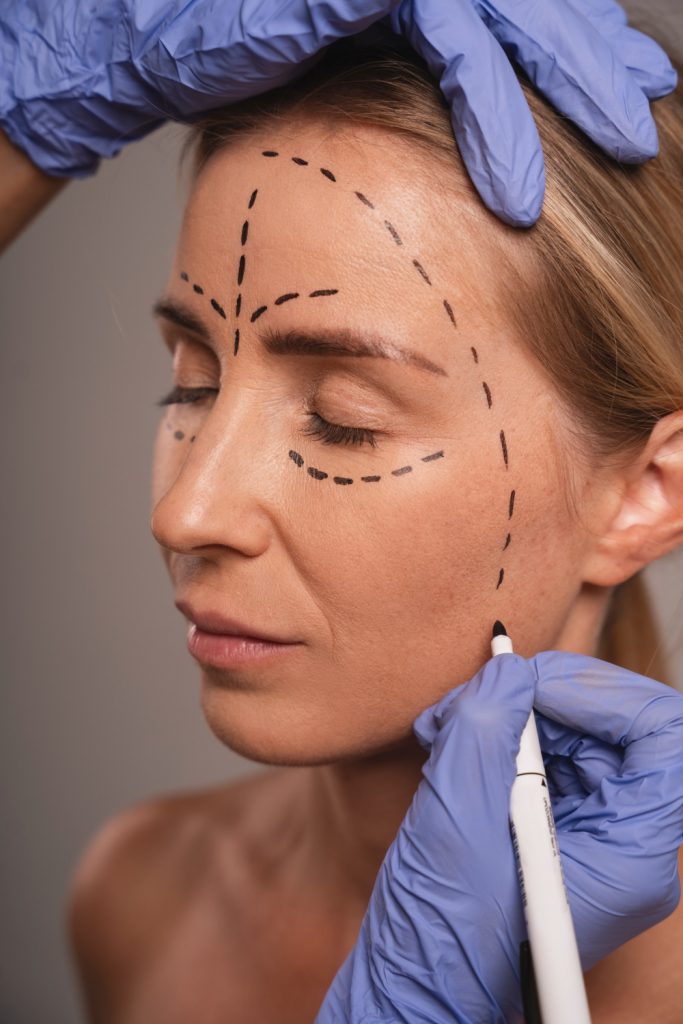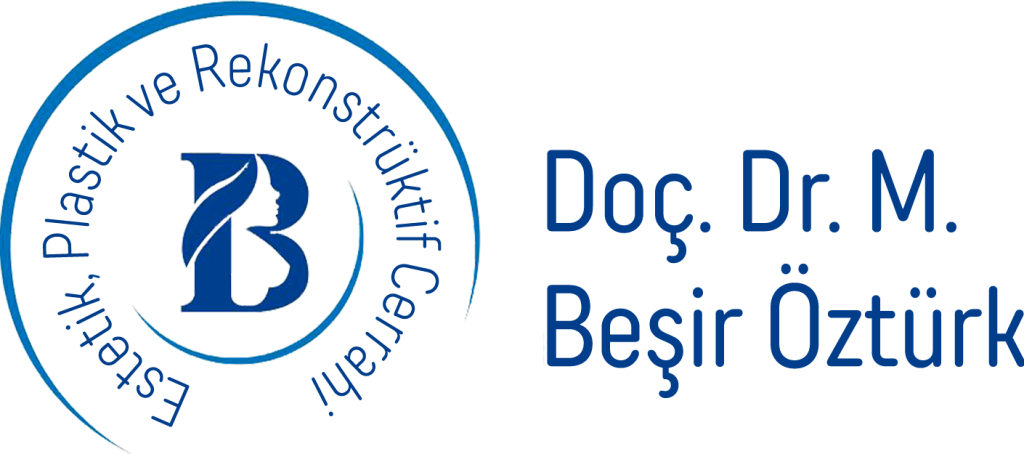
What Is A Face Lift?
Face lift (also known as rhytidectomy) is a procedure which improves the appearance of the face by removing wrinkles, smoothing facial lines, and removing excess skin. It can be used to remove loose excess skin, to tighten the facial muscles and to give an overall appearance of youth, rejuvenation, and vitality to the face.
Treatment Summary
The information below is for general informational purposes.
Exact durations and processes are determined after personal evaluation.
Operation Duration
3 - 6 Hours
Hospital Stay
1 - 2 Nights
Anesthesia
General Anesthesia
Full Recovery
3 - 6 Weeks
The History Of Face Lifts
Everyone knows that the face changes as people age. Facial skin loosens. Wrinkles and lines develop. Lots of people want to avoid or put off this sort of obvious aging for as long as they can. As such, it is no surprise that face lift is a surgery with a long history. The first documented face lift was performed in 1901, when a doctor removed a small piece of skin above the ear and then stretched the facial skin upward. This first technique provided an increase in youthful appearance. However, its results were not long lasting, and relatively quickly, the patients began to see an increase in skin laxity again.
As time passed, new doctors discovered ways to refine and perfect the original procedure. Some doctors found that changing the angle and placement of the incision helped improve the surgical results. Other doctors found that moving a larger section of skin helped to anchor the skin in its new position, thus providing truly permanent results.
In the 1950s, surgeons began to realize that merely moving the facial skin was not always enough: sometimes even better results could be achieved by moving the underlying muscles as well. Lifting and altering loose muscles helped to more completely return vitality to the face, and it did it in ways that looked more natural.
The ‘70s and ‘80s brought about the advent of liposuction, and surgeons began to find exciting ways to combine these two procedures. The combination of removing excess skin and sculpting away unwanted fat allowed surgeons to even more effectively return youthful appearance to the face. Surgeons also found that removing fat from one part of the face and implanting it into another could help to optimize results.
Even today, surgeons continue to find ways to refine their techniques and to optimize face lift procedures.
Face Lift Techniques
All face lifts aim to improve the appearance of the face. However, everyone’s face is different, and each face has unique needs. Because of this, there are a number of different face lift techniques. Each of these has unique benefits and drawbacks. Below are some of the more common forms of face lift. However, there are many more.
SMAS Face Lift
SMAS stands for superficial musculoaponeurotic system, and it is sometimes referred to as the gold standard of face lifts. This form of face lift does not only move the facial skin, it also treats the underlying connective tissue (the superficial musculoaponeurotic system). During an SMAS lift, incisions are usually hidden at the hairline, in front of the ear, behind the ear, and underneath the earlobe.
Deep Plane Face Lift
A deep plane face lift is especially good at correcting problems in the midface. During a deep plane face lift, tissues in the upper and lower cheeks are repositioned, and the malar fat pad is frequently altered. This type of face lift frequently causes more swelling, in part because the dissection runs deeper.
Feather Lift
Feather lift is also sometimes called suture suspension lift, thread lift, or Aptos lift, and it is very different than most standard face lift procedures. This type of lift does not involve the dissection and repositioning of tissues. Rather, a barbed nylon suture is threaded through the facial skin and tightened. These threads are left permanently in the face, and they help to lift the facial structures. This procedure is not helpful for people who have large amounts of excess facial skin.
Mini Face Lift
The term mini face lift can be used to refer to a variety of techniques which try to limit the size and number of incisions necessary. These tend to be less invasive, but they also tend to provide more modest results than a more involved face lift.
Sub-periosteal Lift
A sub-periosteal lift is one of the deepest forms of face lift possible. During this procedure, the surgeon repositions just about every layer of tissue on the face. The term “sub-periosteal” means “below the periosteum (a thin layer of tissue covering the bones).” Thus, the incisions are made very deeply, and a lot of facial tissue is moved. This increases the amount of trauma the patient experiences during surgery, but it may allow for more natural and dramatic results.
What Kinds Of Problems Can Face Lifts Treat?
When a face lift is properly performed, it can help to increase the youthfulness and vitality of a person’s face. Age changes the face, and there is little that can be done to entirely prevent this. A face lift can help to turn back the clock and return a person to a younger and more attractive appearance.
First, a face lift can help to tighten saggy, loose skin. Excess skin can be trimmed away or merely repositioned. Second, the facial muscles themselves can be tightened. Age frequently causes laxity in the facial muscles. Treating these muscles not only helps to create a more natural looking younger appearance, it also helps your face lift results to last longer: moving the underlying muscles helps to alleviate the facial skin’s tension, thus helping to slow the stretching and sagging process.
When taken together, these can help to im
prove the contours of a patient’s face, recreating a beautiful, vibrant appearance.
What Things Can’t Face Lifts Help With?
Although face lifts are becoming increasingly good at treating a diverse number of facial issues, there are some things that a face lift cannot do. The first thing that people should remember is that no cosmetic surgery is perfect. Although a face lift can very frequently offer real and marked improvement, it cannot typically deliver perfection. There may be some blemishes and small scars after your face lift. There may be some wrinkles that are difficult to remove entirely. Similarly, a face lift is primarily meant to treat issues of skin and muscle laxity. If you have sun damage, skin discoloration, or if you want to change the actual underlying structure of your face, you may need to investigate a different surgery.
Are The Results Of A Face Lift Permanent?
If a face lift is properly performed, its results can be long lasting. Doctors have differing opinions on whether they can truly be considered permanent. A face lift will, of course, not stop the natural aging process. A patient who gets a face lift at forty will continue to age, and age will continue to cause some amount of skin and muscle laxity. However, the skin that has been removed is permanently gone, and the patient will likely never have as much sagging skin that he or she would have, had he or she not undergone a face lift.
Drawbacks Of Face Lifts
If a face lift is not properly performed, it can cause an unnatural “pulled look.” Also, sometimes a face lift will leave visible scars, although these can frequently be hidden around the hairline or in the natural folds of the facial skin.
Preparing For A Face Lift
The first step in preparing for a face lift is research. Getting to know everything that you can about what this surgery can do (and what it can’t) will help you to know whether it is a good fit for you. Also, your research about techniques and surgeons will help you to make appropriate decisions that will give you the best results.
Once you have had your initial consultation and scheduled your surgery, your surgeon will likely give you some instructions regarding how to prepare for your face lift. Follow these to the letter. These instructions may include quitting smoking, beginning to take a multi-vitamin or antibiotic, and other general health tips. Before your surgery, you will need to arrange to take some time off from work, and you will also need to find someone to drive you to and from your surgery.
What To Expect During A Face Lift
On the day of your surgery, you will report to the surgical center. The surgical center will give you an estimate of how long your surgery will take, but you can expect it to take at least a couple hours. Before the surgery can begin, you will be anesthetized. There are a number of different anesthesia options available, ranging from local anesthetic with a relaxation medication through conscious sedation and all the way to general anesthetic.
After you are anesthetized, the surgeon will begin the surgery. Incisions will be made along your hairline and around your ears. Some effort will probably be made to keep these incisions hidden in your natural facial creases. The skin will then be peeled back and the underlying fat and muscle will be reshaped and tightened. The skin will then be redraped and trimmed, and the incisions will be closed.
Recovering From A Face Lift
When the surgery is over, you will be driven home. You will experience some amount of discomfort in the days immediately after your surgery. Your surgeon will have prescribed you some form of pain killer to help with this. You will probably need to keep your head elevated for the first few days following your surgery to help reduce swelling.
You will probably want to take it easy for a while after your surgery, although you’ll want to make sure you get up and walk a little several times a day to help prevent the development of blood clots. However, you will need to avoid bending over, strenuous activity and heavy lifting until your surgeon lets you know that it is okay.
Common Side Effects Of Face Lifts
After your face lift, you can expect to experience some amount of swelling and bruising. This is common, and it will typically go down relatively quickly. It is also fairly common for patients to feel somewhat sick and woozy immediately after the surgery due to the anesthesia. This will also usually go away quickly. Some amount of scarring is usually present in face lifts, although it typically does not end up being very conspicuous.
Serious Risks of Facelifts
During any surgery, there is the possibility for serious complications due to infection, to anesthesia overdose, or to other factors. This is relatively rare, but it does sometimes happen. Patients also sometimes experience permanent numbness due to damage done to the facial nerves, and some people develop painful hematomas. Hematomas form when the patient bleeds underneath their skin, and they require immediate attention.
Minimizing The Risks For You
People who smoke are at an increased risk when it comes to face lifts. Quitting smoking may be one of the best things that you can do to make your face lift safer.
Also, you should exercise care when selecting your surgeon. Make sure that you get someone who you can trust to be professional, skilled, safe, and ethical. Take the time to find the very best surgeon possible. Compare before and after pictures, research doctors’ certifications, and try to find out if the surgeons you are looking at have had any botched operations or bad press.
When it comes time for you to meet with your surgeon in a consultation, ask yourself whether you feel comfortable placing your body and your health in his or her hands. Does the office seem clean and professional? Is the doctor’s manner respectful? Does the surgeon listen to you and care about your opinions? Preparation is always better than damage control, and this is definitely true when it comes to selecting a surgeon for your face lift.
Finally, follow your surgeon’s directions exactly. Avoid all medications and supplements that he or she doesn’t okay. Be completely honest with your surgeon when it comes to your medical history and to your consumption of drugs, medications, and supplements. In the end, it will help you to have a safer, more successful face lift.
Average Costs For Facelifts
Face lift costs can vary greatly. It can cost as little as $6,000 or as much as $15,000, depending on a number of factors.
Factors That Influence The Cost Of Face Lifts
Geographic location has a lot to do with how much your face lift will cost. Surgeries performed in metropolitan areas tend to be much more expensive than similar surgeries performed in rural areas. The surgeon’s level of experience and popularity will also have a bearing on the ultimate cost. For more exact information, please speak with your surgeon.

